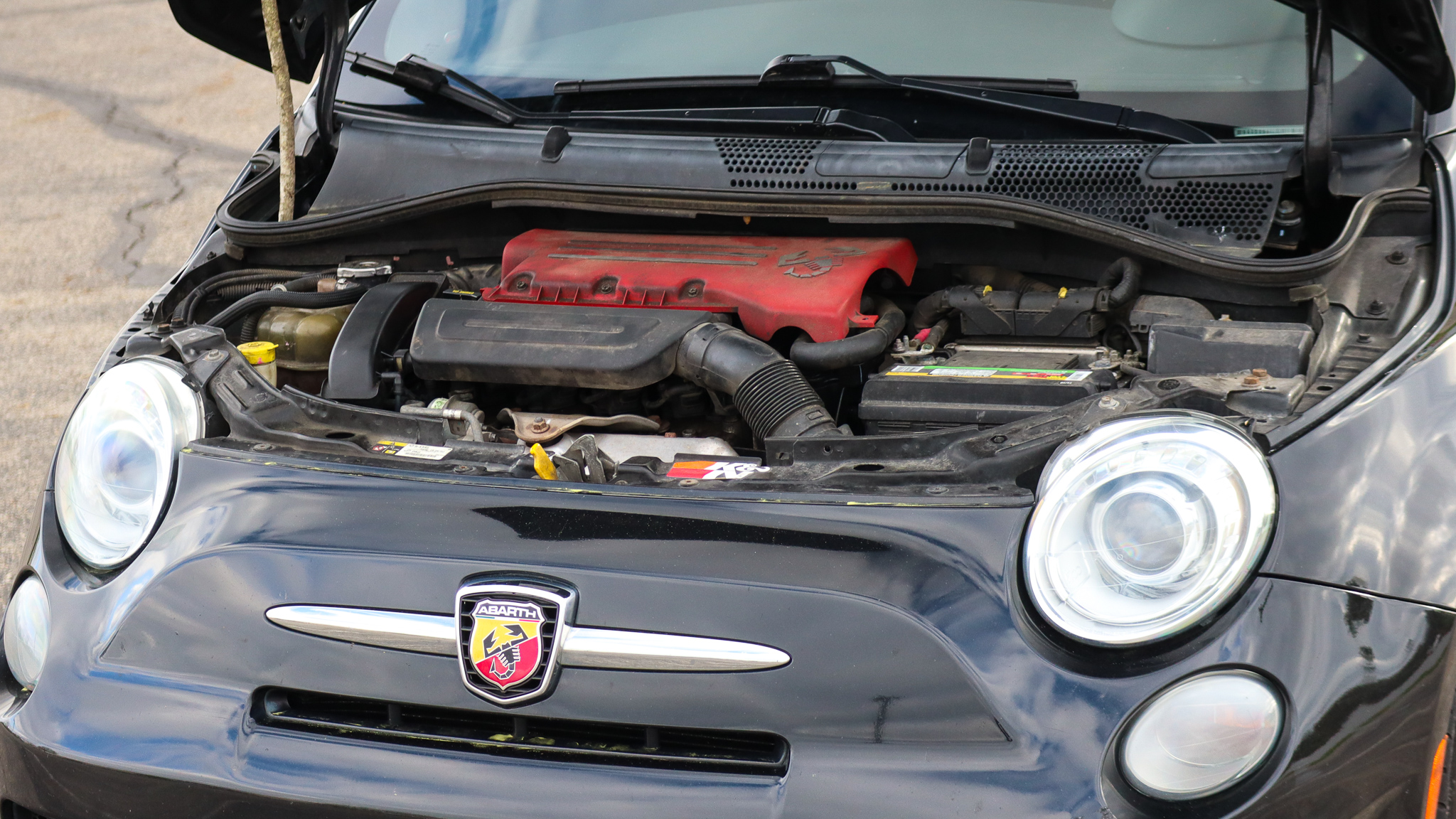

Recently, I took my Fiat 500 Abarth to the Tail of The Dragon at Deals Gap in the Great Smoky Mountains. This chunk of U.S. Route 129, set partially in eastern Tennessee and into North Carolina, is one of the most technical, challenging, and rewarding driving roads in the United States. It’s also in the middle of nowhere, about two hours from Knoxville, Tennessee, and about a seven-hour drive from my house in Columbus, Ohio. Once I arrived and settled in, I hopped in my car and did a spirited run of The Dragon.
The first run was great, but I noticed that the car felt a little more sluggish than normal. I didn’t think much of it, so I finished my drive, turned around, and started my return back down. Then, a chime went off, and my check engine light clicked on.
I’m always prepared, so I had my Bluetooth OBDII scanner with me. It flashed P0299, which means turbocharger underboost. My old Sonic had that issue when the wastegate died, and it rendered the car nearly undrivable, but that didn’t seem to be the problem here. The Fiat was a little slower than usual but not completely useless like I might see from a failed wastegate or diverter valve.
Then I realized it. I had been freeway driving for almost eight hours with no break, and I rolled right into a spirited run on a very long country road. The car never cooled down, and the engine compartment was completely drenched in heat. The turbocharger underboost was valid because my car was heat soaked.
What Is Heat Soak?
Heat soak is essentially when engine parts get too hot to correctly function. It’s not quite the same as an engine overheating. I’ll explain.
Engines are hot little lumps of metal that compress fuel and air thousands of times per minute and convert that energy into forward thrust. Naturally, this is a hot, violent, and loud process that most human beings don’t want next to them, so manufacturers have smartly placed it away from the rest of the car in what is called an engine compartment.
Sometimes those engine compartments can’t always evacuate that excess heat. That heat then soaks into other engine parts and systems and harms their efficiency.

Isn’t That the Same as Overheating?
Not quite. In my case, the engine’s cooling system was working as it should. The coolant and water pump did their jobs to keep everything within operating temperature. There was never any danger of a ruined head gasket or the like from my vehicle.
However, other engine parts were suffering the effects of excess heat in the engine bay. My Fiat 500 Abarth is turbocharged and it relies on a feed of reasonably cool air to run properly. Cooler air is denser, and this dense air is monitored by the vehicle’s computer to effectively adjust fuel and spark and meter the correct amount of boost. My vehicle’s engine bay was too hot, and the vehicle was unable to suck in that cooler, denser, air. Thus, the turbocharger was not running at the correct efficiency. My vehicle sucked in hot and thin air, meaning the turbocharger was not physically able to generate the desired boost level requested by the computer.
So Heat Soak Only Happens to Turbo Cars?
No, although turbo cars arguably show the most symptoms of heat soak. At its core, heat soak stresses out other components. In part, it will cause the oil temperature to rise, and that oil then thins out below specifications and accelerates wear on the engine.
How To Fix Heat Soak
The easiest way to fix or prevent heat soak is to simply stop driving, pop the hood, and let the car rest. At the very least, take it easier on the vehicle. Remember, the engine generates heat, so letting the car rest with the engine off will make things return to normal. Using fans can also allow more heat to escape.
Unfortunately, Heat soak may be an inherent design problem with some vehicles. My 500 Abarth has a big engine in a tiny engine compartment, and there’s just not a heck of a lot of places where the heat can escape. More than a few owners have complained of heat soak during track days or other long aggressive driving situations.
How Do I Know When My Car Is Suffering From Heat Soak?
Heat soak usually comes on after heavy and sustained periods of hard driving, typically in hot weather. The car’s performance will be limited, and acceleration may feel lethargic. Coolant and engine temperature may be fine, but excess heat soak can make that slowly march upward, too. An OBDII scanner will show that oil temperature will be higher than normal, and so will intake air temperature. If things are too hot, certain vehicle systems may just straight up stop working until things cool down.
Personally, I allowed my Abarth to cool down for a few hours, cleared the underboost code, and it was completely fine for the remainder of my weekend at the Tail of The Dragon. In the future, it looks like I’ll have to be very cognizant of the limitations of my Abarth.
Correction: Thursday, April 28, 2022, 9:00 a.m. ET: A previous version of this story incorrectly stated U.S. Route 129 was set in southwestern Tennessee. It has been corrected.